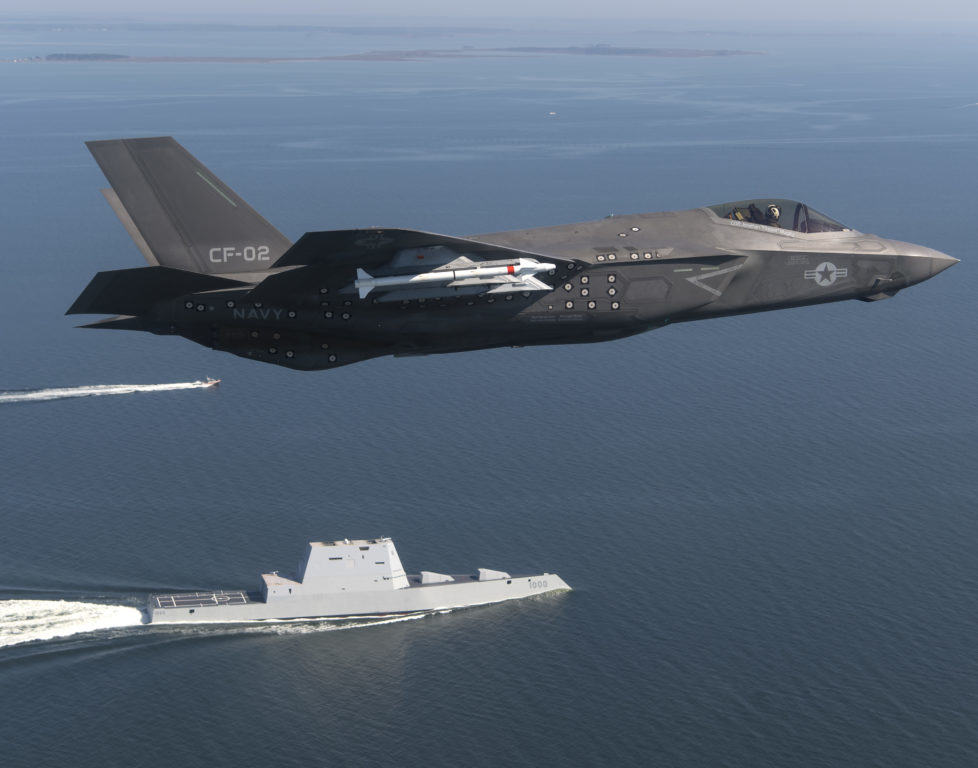

Stealth is becoming more and more common — but just because you designed an invisible (to radar) plane doesn’t mean the job is done. Far from it, to be very blunt. In fact, the job’s only half done.
You see, the plane isn’t the only thing that the radar waves bounce off of. They also will reflect very well off of the missiles your F-35 carries. All the stealth tech does no good if the stuff you intend to drop on the bad guys is seen on radar while you’re still minutes — or even an hour — away.

At SeaAirSpace 2017, mock-ups of a number of new missiles in development were displayed, so more can be carried internally on the F-35 and other stealthy jets (like the B-21 and B-2, for instance). In essence, this is taking concealed carry to a whole new level.
For instance, one such weapon being displayed was the Advanced Anti-Radiation Guided Missile – Extended Range. The AARGM-ER is a development of the AGM-88E AARGM, in essence: a vastly upgraded HARM. AARGM is already in service with the Navy, with more being produced, and it is used on the F/A-18C/D/E/F Hornet and Super Hornet airframes on their pylons, easily the most capable anti-radar missile they have ever carried.

But with the F-35, there is a problem — those big-ass fins on the AARGM. That means AARGM has to be carried externally, which means the F-35 will be seen. If the F-35 is seen, an enemy will shoot at it. And when the enemy shoots at a F-35, they could hit it — and if the plane is hit, it could be shot down. That’ll ruin everyone’s day.

Where AARGM-ER, though, seeing the F-35 becomes much, much harder. Why? The answer is what you don’t see. The big fins in the middle of the AARGM aren’t there. The tail fins have also been pared back. This means the missile can now fit in the internal weapons bay.

In other words, the F-35 now can get closer — and the AARGM-ER will not only fit in the weapons bay, it can also be fired from twice as far as the current AARGM. It’s as if this missile has been designed to put down the Russian S-400 surface-to-air missile system, also known as the SA-21 Gargoyle.
AARGM-ER isn’t the only missile at SeaAirSpace 2017 designed for internal carriage. Kongsberg’s Joint Strike Missile is also being designed for internal carry on the F-35. In short, the F-35 will be practicing a very potent form of concealed carry.
